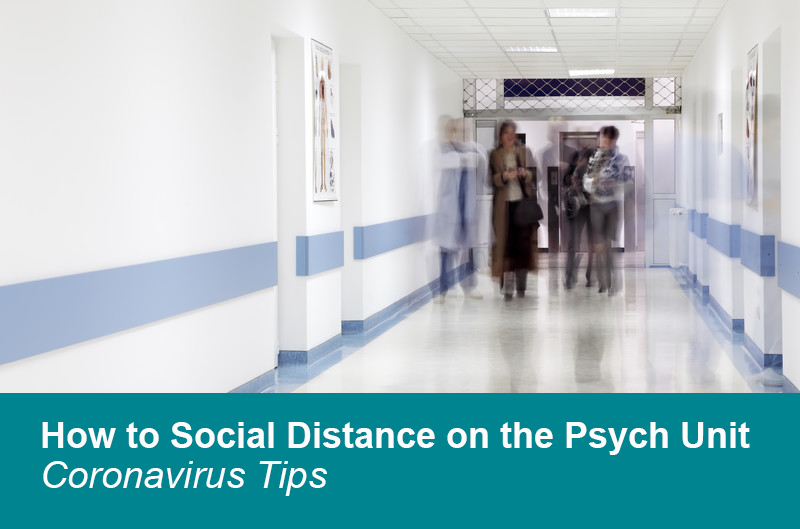How to Social Distance on the Psych Unit
The Carlat Psychiatry Blog, Volume , Number ,
https://www.thecarlatreport.com///
Daniel Carlat, MD Social distancing on a psychiatric inpatient unit is not easy but it must be done. Here are some tips. It’s helpful to break these strategies out into four categories: visitors, patient/patient, staff/staff, and staff/patient. Visitor distancing Patient/patient distancing Staff/staff distancing Team meeting rooms tend to be small, window-less, and high risk. 6 feet of distancing is usually not possible. The best solution is to turn team meetings into teleconference meetings, with staff calling in from their individual offices. Those who don’t have offices may have to use the team room as their space, but this is usually okay since there are relatively few office-less team members and they can spread themselves out adequately. Staff/patient distancing The ultimate distancing: Telehealth Do you work on an inpatient unit? Please share your thoughts about these social distancing techniques in the comments below. In addition, please join our Inpatient Psychiatry Facebook Group.
First of all, restrict all “routine” visits, meaning friend and family visits. The only visitors allowed should be those who are absolutely critical for treatment or for discharge planning. This usually includes outpatient care team members, such as case workers, group home staff, etc…. Family may be included in this category, for example when spouses or parents need to make sure the patient has improved enough for them to feel comfortable allowing them to return home. Even these mission critical visits can often be accomplished via phone or video conferencing.
The current guideline is 6 feet of separation, so get out your tape measures and create your new geography of survival. Mark out positions for chairs wherever patients gather, including group treatment rooms, dining areas, TV rooms, and any milieu areas. If spaces are too small to accommodate the 6 feet rule, improvise. For example, for meals, you can split the population into two serving times to decrease density. Patients can eat in their rooms if needed. Groups can be split as well and this may mean needing to decrease the number of treatment offerings. Couches don’t work well in the Age of Covid, so you may want to swap them out for individual chairs.
Nurse’s stations are a real problem in these strange new days. They are always tight and crowded. Each unit has their own configuration and you have to do what you can. Each shift can start with assigning staff to a specific spot in the station, for example. Mary gets this 6 foot portion of counter space, while Jim gets the next 6 feet, etc….
It’s tough to stay 6 feet away from patients, since they are ambulatory, are often pacing or roaming around the hallways and you will be, to some extent, mingling with them. During formal interviews, you can be quite directive regarding who sits where, and be explicit with them about why you are insisting on sitting far away, eg., “Because of the coronavirus, we have a policy of keeping at least 6 feet of distance between patients and staff, so that’s why I’m sitting here and you’re sitting there.” If you don’t say it, many patients will spin their own explanations for the arrangement (eg., “the doctor hates me”, “The doctor’s scared of me,” “the supreme being is now in control” etc….).
With the latest expansion of telehealth insurance coverage, inpatient telehealth treatment is now completely feasible. In a future post I will cover tips on how to implement this ultimate social distancing strategy on the inpatient unit.



Leave A Comment
You must be logged in to post a comment.